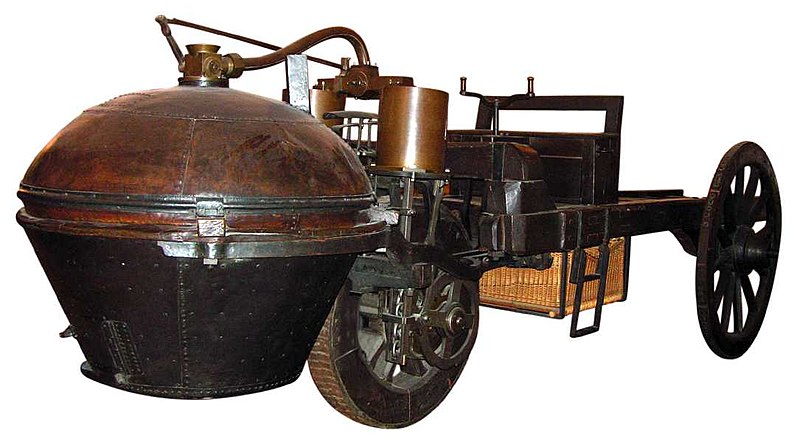 Ferdinand Verbiest, a member of a Jesuit mission in China, built the first steam-powered vehicle around 1672, designed as a toy for the Chinese Emperor, it being of small scale and unable to carry a driver or passenger but, quite possibly, the first working steam-powered vehicle ('auto-mobile').
Ferdinand Verbiest, a member of a Jesuit mission in China, built the first steam-powered vehicle around 1672, designed as a toy for the Chinese Emperor, it being of small scale and unable to carry a driver or passenger but, quite possibly, the first working steam-powered vehicle ('auto-mobile').
Steam-powered self-propelled vehicles are thought to have been devised in the late-18th century. Nicolas-Joseph Cugnot demonstrated his fardier à vapeur, an experimental steam-driven artillery tractor, in 1770 and 1771. Cugnot's design proved to be impractical and his invention was not developed in his native France, the centre of innovation passing to Great Britain. By 1784, William Murdoch had built a working model of a steam carriage in Redruth, and in 1801 Richard Trevithick was running a full-sized vehicle on the road in Camborne. Such vehicles were in vogue for a time, and over the next decades such innovations as hand brakes, multi-speed transmissions, and better steering developed.
Some were commercially successful in providing mass transit, until a backlash against these large speedy vehicles resulted in passing a law, the Locomotive Act, in 1865 requiring self-propelled vehicles on public roads in the United Kingdom be preceded by a man on foot waving a red flag and blowing a horn. This effectively killed road auto development in the UK for most of the rest of the 19th century. as inventors and engineers shifted their efforts to improvements in railway locomotives. The law was not repealed until 1896, although the need for the red flag was removed in 1878.
In Russia in the 1780s, Ivan Kulibin started working on a human-pedalled carriage with a steam engine. He finished working on it in 1791. Some of its features included a flywheel, brake, gearbox, and bearing, which are also the features of a modern automobile. His design had three roadwheels. Unfortunately, as with many of his inventions, the government failed to see the potential market and it was not developed further.The first automobile patent in the United States was granted to Oliver Evans in 1789. In 1805, Evans demonstrated his first successful self-propelled vehicle, which not only was the first automobile in the USA, but was also the first amphibious vehicle, as his steam-powered vehicle was able to travel on roadwheels on land, and via a paddle wheel in the water.
Among other efforts, in 1815, a professor at Prague Polytechnich, Josef Bozek, built an oil-fired steam car. And Walter Hancock, builder and operator of London steam buses, in 1838 built a four-seat steam phaeton.

0 comments:
Post a Comment